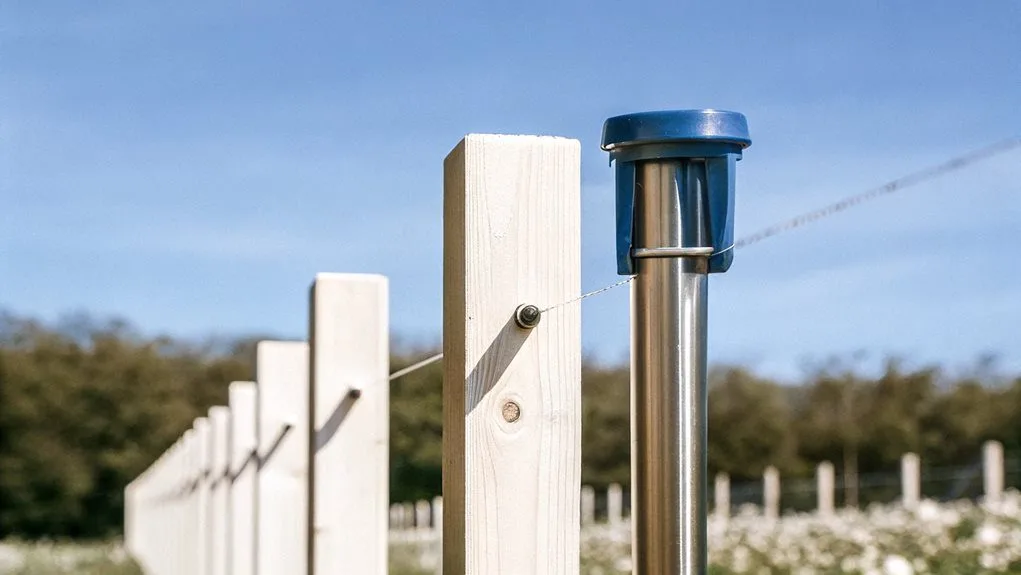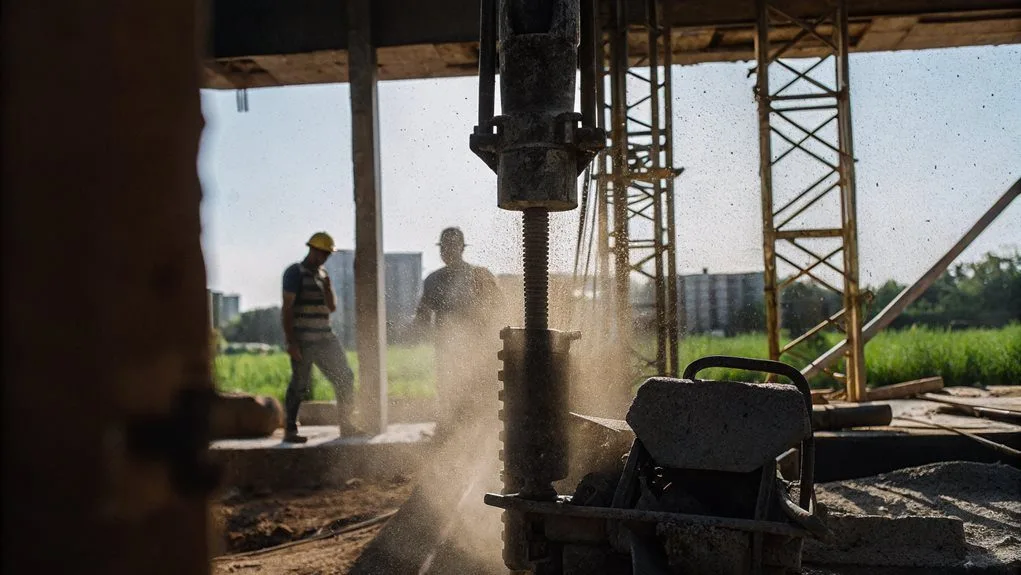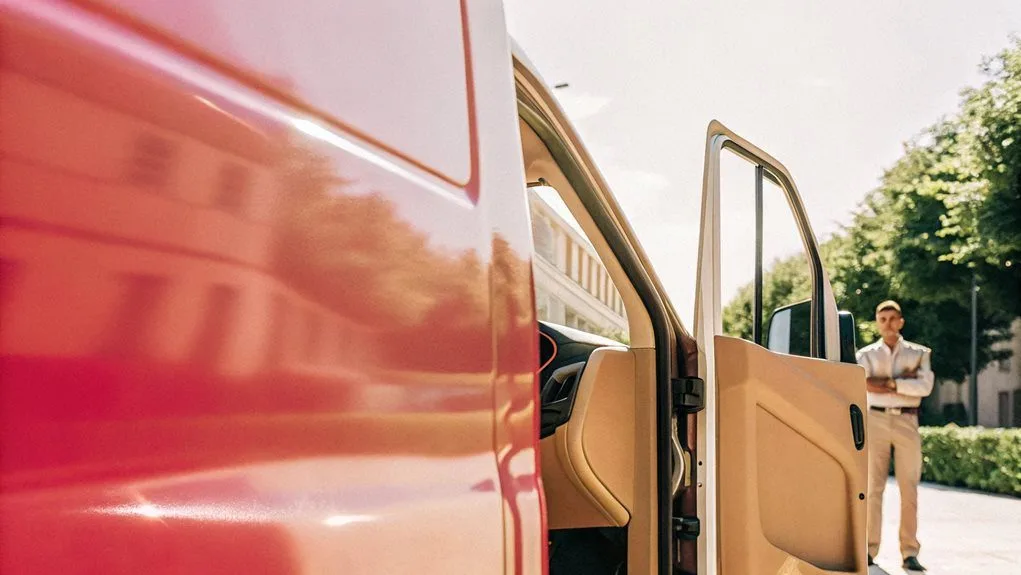So, you think a telehandler’s like a superhero for lifting? Not quite! These beasts can haul up to 16,000 kilogrammes of materials, but lifting people? That’s a whole different ball game with lots of regulations. You’ve got to use the right gear—like a special basket—and follow strict safety rules.
Guess what? Your operator manual might throw in some surprises too. Stick around, and you might just discover the secrets to safe telehandler operation!
Key Takeaways
- Telehandlers are primarily designed for lifting materials, with capacities ranging from 2,500 to 16,000 kilograms depending on the model.
- Only equipment specifically designed for lifting personnel should be used; telehandlers are not suitable for this purpose.
- Always adhere to safety regulations and consult the operator manual regarding lifting capabilities before operation.
- Proper weight distribution and load securing are essential to maintaining stability during material handling with a telehandler.
- Conduct regular inspections and pre-operation checks to ensure equipment safety before lifting any loads.
Understanding Telehandler Lifting Capabilities
So, how much can a telehandler really lift? Well, that rather depends on what model you’ve got.
If you’re sticking to compact dreams, those lovely little telehandlers handle around 2,500 kilograms.
But if you’re feeling ambitious and go for the heavy-duty option, you could hoist up to 16,000 kilograms. Yes, you read that right.
But wait—don’t just toss a 450-kilogram load up in the air and call it a day! You need to think about height, reach, and stability. Weight distribution is crucial for ensuring safe operation and preventing accidents.
When lifting, remember: the higher you go, the less you can carry. It’s like trying to stretch your budget after a shopping spree; you can only take what you can handle! Additionally, large telehandlers are designed for heavy-duty construction or industrial work, ensuring they can handle extra heavy loads with impressive lifting capacities.
Legal Regulations for Lifting Personnel
Why on earth would you think it’s acceptable to lift people with a telehandler without knowing the regulations? Seriously, folks! Only use equipment designed for lifting people. Think a standard fork will do? No, that’s absolutely not permitted.
The Department of Employment and Labour has clear guidelines, and you must follow them.
Your operator manual states whether you can lift personnel—if it’s silent on the matter, guess what? You cannot.
Plus, the equipment must meet SANS standards and have the proper attachments!
Can you imagine falling because you skipped a few regulations? Absolutely not acceptable.
And your employer has a responsibility too; they must ensure everything’s safe and inspected.
Safe Handling of Materials With Telehandlers
Safe Handling of Materials With Telehandlers
Regarding safe handling of materials with telehandlers, you can’t just wing it. Sure, it might seem easy, but trust me, knowing what you’re doing is vital. First off, get properly trained. You wouldn’t want to be the only one on site who doesn’t read the load chart, right? That could end badly—think flying bricks! Familiarise yourself with the boom and fork; they’re not just fancy attachments! And whilst you’re manoeuvring around, try carrying loads low to the ground. You know, just in case you decide to channel your inner acrobat. Additionally, ensure that safe handling of materials is a priority to prevent accidents on the job site. Remember that components like boom must be inspected regularly to ensure safe operation. Watch your surroundings, though—those slopes aren’t always friendly. Communication is key, so don’t pretend you can read minds. Nobody wants surprises, especially in terms of heavy lifting!
Weight Distribution and Stability Factors
How on earth can you expect to lift safely if you don’t understand weight distribution? Seriously, your telehandler isn’t a magic box. You’ve got to distribute the weight evenly across those forks.
If it’s off-centre, say goodbye to stability. Imagine trying to balance a tall stack of pancakes—tip one way, and it’s a disaster.
Off-centre loads spell disaster for stability—just like toppling a stack of pancakes!
And don’t even get me started on the ground conditions. Uneven surfaces? That’s like trying to roller skate on a trampoline, folks. Even load distribution ensures the forklift remains balanced and stable, which is crucial for safe lifting.
You need to know your load’s dimensions, too. Wider or taller loads? Good luck keeping that centre of gravity in the stability triangle. So, secure those loads properly! You want to lift? You’ve got to play it smart!
Best Practices for Telehandler Operation
Whilst it might seem like a telehandler is just an advanced forklift, operating one safely requires proper training and adherence to procedures. Operating these machines safely is essential for South African worksites.
Before beginning operation, conduct thorough pre-operation checks. Pre-operation inspections ensure that equipment is in good condition and functional for safe use. Adjusting machine personality settings can also enhance performance tailored to specific job site needs.
Inspect the equipment systematically, review the load capacity specifications—never exceed the rated limits. Identify potential hazards in the work area as they can be present anywhere on site.
Clear communication protocols are absolutely critical for safe operation. Avoid positioning loads at excessive heights; maintain loads as close to ground level as possible to ensure stability.
Always wear the required personal protective equipment—safety gear is mandatory for preventing workplace injuries. Regular maintenance schedules must be followed without exception.
Safety warnings and operational guidelines exist for good reason. Implementing these best practices will significantly reduce operational risks and prevent equipment damage or accidents on South African construction and industrial sites.
Conclusion
So, next time you’re eyeing that hefty pile of bricks or your buddy who thinks he’s a stuntman, remember: telehandlers can lift materials, not people. Sure, you might think it’s just a quick ride, but the law—and gravity—has other ideas. Keep weight balanced and stick to the best practices, or that telehandler’s gonna get a workout you didn’t sign up for. Use it right, or you might end up as the punchline in a very expensive mishap.






